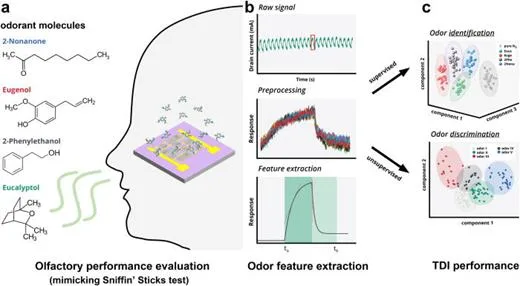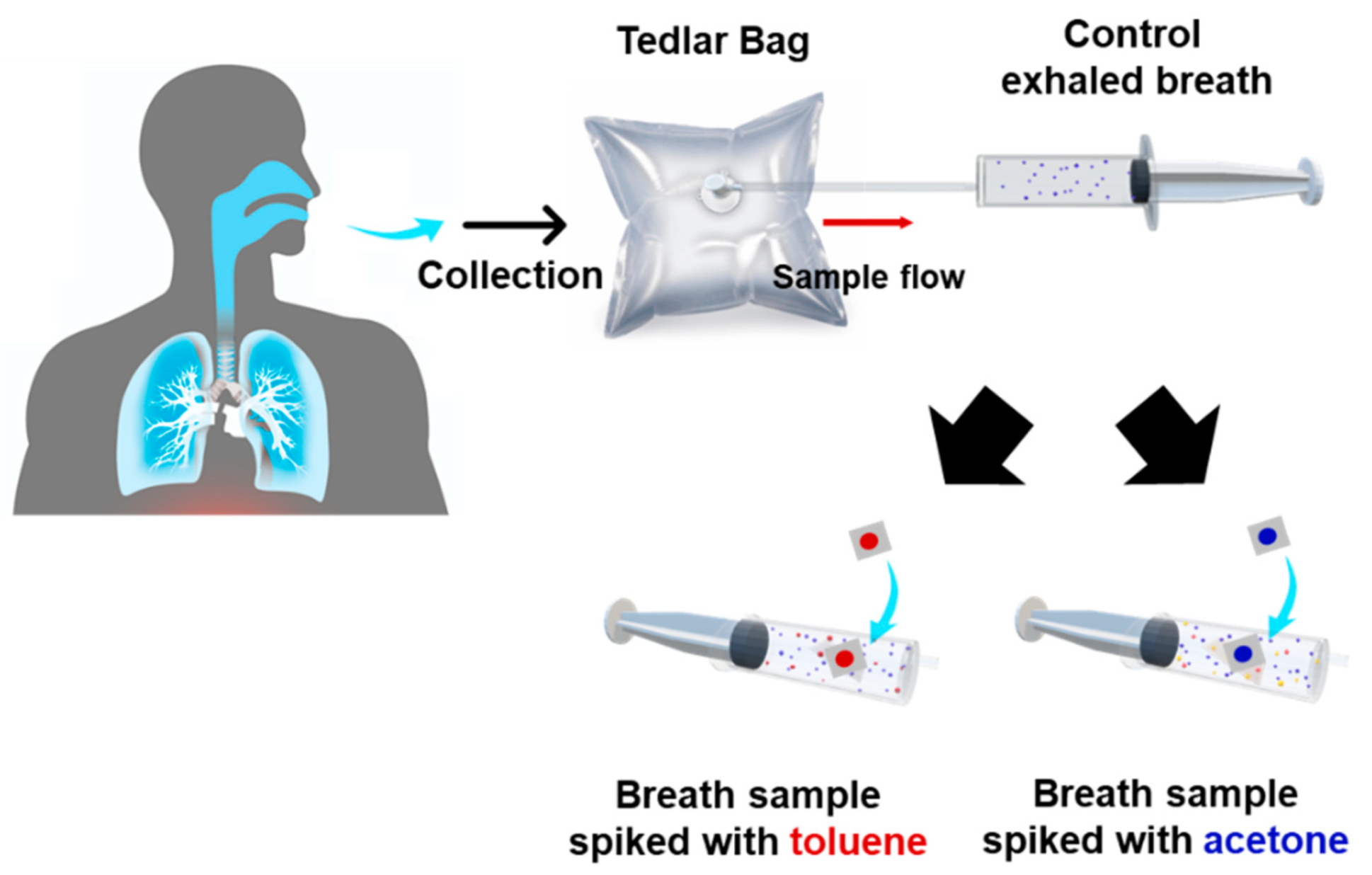Advancing Olfactory Technology: New Graphene Sensors Redefining Scent Detection

Olfaction, an ancient sensory system, offers a profound understanding of our environment through the detection of volatile organic compounds (VOCs). Leveraging this concept, researchers from TU Dresden has developed machine learning-enabled graphene-based electronic olfaction sensors, ushering in a new era of scent digitization.

E-olfaction platform. Credits: Shirong Huang et al., 2024.
The study discusses the complex workings of these innovative sensors. By tackling eleven transient kinetic features extracted from sensing responses, the researchers have successfully established unique “fingerprint” profiles for various VOCs. Drawing inspiration from biological models, particularly the Sniffin’ Sticks test, the electronic olfaction sensors showcase remarkable proficiency in detecting four distinct VOC odors: clove, eucalyptus, lemon, and rose scents.
Notably, these sensors exhibit exceptional olfactory performance, boasting heightened sensitivity in odor detection thresholds, discrimination, and identification capabilities. Impressively, when exposed to binary odor mixtures, the sensors mimic human olfactory perception by displaying response features akin to individual odors, with a correlation to their respective ratios.
Further data from molecular dynamics simulations and density functional theory calculations shed light on the intricate interplay between odorant molecules and sensing materials. This understanding reveals vast potential for applications in emerging fields like environmental monitoring and public security.
Dr. Shirong Huang, lead author of the research, will join DOS 2024 Congress in December. Join us to learn more about these graphene-based sensors redefining our understanding of scent detection and analysis.




